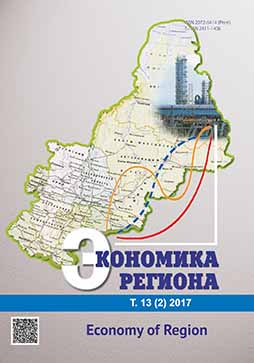Вред, причиненный ресурсам традиционного природопользования, и его экономическая оценка
Harm to the Resources of Traditional Nature Management and Its Economic Evaluation
Author(s): Vladimir Grigoryevich Loginov, Margarita Nikolayevna Ignatyeva, Valery Vasilyevich BalashenkoSubject(s): Economy
Published by: Институт экономики Уральского отделения Российской академии наук
Keywords: Arctic territory; industrial development; natural-resources potential; senile industry; reindeer herding; deer pasture; fisheries; quota; Small Indigenous People of the North (SIPN); economic damage;
Summary/Abstract: The Yamal region occupies the fifth part of the Yamal-Nenets Autonomous District. Therefore it is one of the territories where traditional natural resource management is mainly developing. Its key branches are reindeer herding and fisheries. The major problems in the development of industries are due to an active industrial and transport exploitation of the tundra zone; the situation in reindeer husbandry caused by pasture overgrazing because of uncontrolled increase in livestock; poaching fish. Two following anthropogenic factors have a negative impact on soil and vegetation in the Yamal region: reindeer herding as the main traditional form of natural resource management of Small Indigenous People of the North (SIPN) and the intensive industryrelated development of the territory (geological exploration, industry, transport, construction). Since grazing is practiced throughout the whole Yamal Peninsula, which is not occupied by industrial zones, it is the most widespread form of natural resource use and the leading factor of anthropogenic impact on Yamal’s natural territorial complexes. The primary reason for the decline in fish resources is the violation of the ecosystemic reproduction of fish resources due to their excessive catch. One of the main reasons of this is poaching. In turn, the annual increase of surplus catch is caused by the population growth, including SIPN, and the growing density of the road network providing the access to fishing grounds. The article offers the guidelines for economic damage assessment determined by the harm to the pasture resources. The authors justify the amount of compensation that repairs losses arising from their damage, which takes into account the decline in the productivity of land and the period of restoration of the economic and biological potential of pastures for the corresponding periods of years (compensation for economic damage). The economic damage assessment of the fish resources supposes taking into account the decline in their economic value. It involves the use of a refined population-biological approach while the detailed calculation. In addition, we give an example of the guidelines’ approbation.
Journal: Экономика региона
- Issue Year: 13/2017
- Issue No: 2
- Page Range: 396-409
- Page Count: 14
- Language: Russian

